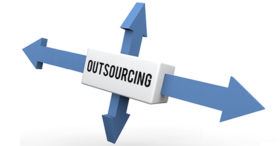Fraud is costly for all victimized companies, but it’s even worse in the construction sector. According to the Association of Certified Fraud Examiners’ Report to the Nations: 2020 Global Study on Occupational Fraud and Abuse, construction companies affected by fraud lose a median $200,000 per fraud incident, compared with $125,000 per incident for all organizations.
Some types of fraud are more prevalent in the construction industry, particularly payroll and billing fraud. These can lead to legal liability and fines. For example, paying under-the-table cash wages to avoid paying payroll taxes could result in criminal charges and significant penalties. To prevent your managers and workers from acting illegally or unethically, tighten your internal controls.
Essential controls
Certain internal controls are essential — including segregation of duties. This means that multiple employees should handle multiple financial or accounting tasks. For example, the person who processes cash transactions shouldn’t also prepare your company’s bank deposits. If you don’t have enough accounting employees to segregate duties, consider outsourcing some or all accounting functions. Also, have monthly bank statements sent directly to you or a manager independent of your accounting department.
You can reduce purchasing fraud threats by naming someone other than your purchasing agent — you or an estimator, for instance — to review vendor invoices, purchase orders and other documents. Also use prenumbered purchase orders and regularly check materials and supplies to ensure they correspond to what was ordered.
Kickbacks and bid-rigging can be kept to a minimum with scrutiny. If your company is suddenly winning bids that you haven’t in the past and that seem like a stretch, verify that your bid processes have been followed. Sometimes employees disguise illegal activities as change orders, so be sure to scrutinize each change order.
To minimize the risk of payroll fraud in your company, ask someone independent of your accounting department to verify the names and pay rates on your payroll. And if you don’t already, pay employees using direct deposit, rather than with checks or cash. You may also want to make surprise jobsite visits to compare employee headcounts to time reports and wage payments.
Get help
Don’t forget to enlist the help of fraud experts. We can review your accounting records and inventory and visit jobsites to help assess risk and suggest additional internal controls.
© 2021 Covenant CPA



